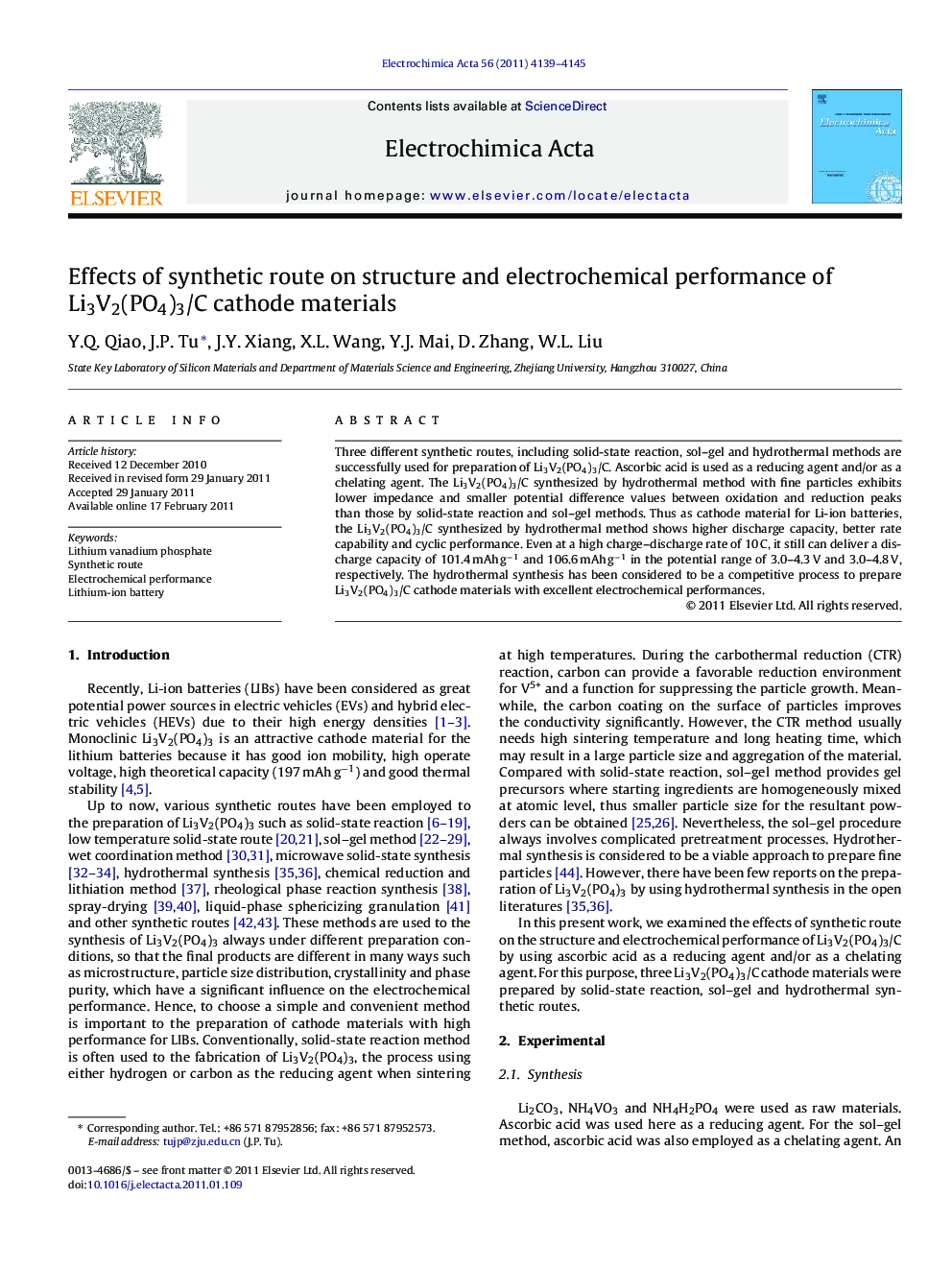| Article ID | Journal | Published Year | Pages | File Type |
|---|---|---|---|---|
| 190276 | Electrochimica Acta | 2011 | 7 Pages |
Three different synthetic routes, including solid-state reaction, sol–gel and hydrothermal methods are successfully used for preparation of Li3V2(PO4)3/C. Ascorbic acid is used as a reducing agent and/or as a chelating agent. The Li3V2(PO4)3/C synthesized by hydrothermal method with fine particles exhibits lower impedance and smaller potential difference values between oxidation and reduction peaks than those by solid-state reaction and sol–gel methods. Thus as cathode material for Li-ion batteries, the Li3V2(PO4)3/C synthesized by hydrothermal method shows higher discharge capacity, better rate capability and cyclic performance. Even at a high charge–discharge rate of 10 C, it still can deliver a discharge capacity of 101.4 mAh g−1 and 106.6 mAh g−1 in the potential range of 3.0–4.3 V and 3.0–4.8 V, respectively. The hydrothermal synthesis has been considered to be a competitive process to prepare Li3V2(PO4)3/C cathode materials with excellent electrochemical performances.
Research highlights► This paper examined the effects of the synthetic condition on the structure and electrochemical performance of the cathode materials Li3V2(PO4)3/C. ► Three different synthesis routes, including solid-state reaction, sol–gel and hydrothermal methods were successfully used for preparation of Li3V2(PO4)3/C. ► Until now, there have been few reports on the preparation of Li3V2(PO4)3 by using hydrothermal synthesis in the open literatures. ► It is found that the hydrothermal method is considered to be a competitive process to prepare Li3V2(PO4)3/C cathode materials with excellent electrochemical performances in our studies.
